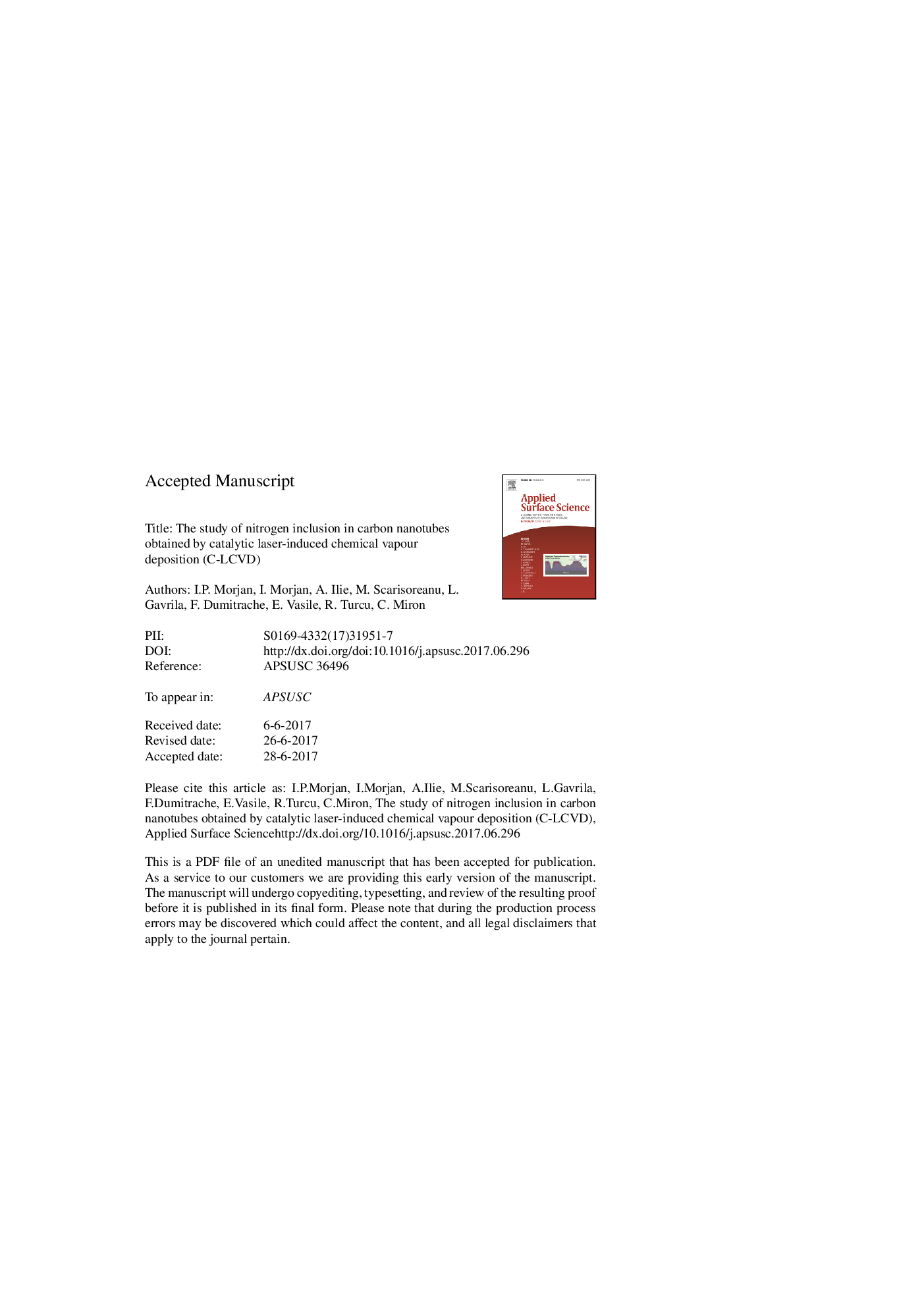| Article ID | Journal | Published Year | Pages | File Type |
|---|---|---|---|---|
| 5347363 | Applied Surface Science | 2017 | 20 Pages |
Abstract
Nitrogen doped carbon nanotubes were grown on Fe2O3 nanoparticles deposited on silicon substrates, by laser-induced chemical vapour deposition of acetylene/ammonia mixtures. The concentration of the nitrogen has been controlled in the range 1-6 atomic% by adjusting the flow rate of ammonia, pressure and laser power. XPS and Raman spectroscopy were used to quantitatively assess the compositional and structural properties of the nitrogen-doped carbon nanotubes (NCNTs). First order Raman spectra were deconvoluted assuming five vibrational modes and the integrated peak intensity ratio ID/IG and I2D/IG of all samples are displayed. We demonstrate that the relative amount of sp2 CC carbon has the same trend as ID4/IG and the pyrrolic relative amount exhibits the same trend as I2D4/IG. The high resolution TEM images are consistent with the Raman and XPS results, revealing that the surface of the NCNTs outer walls becomes more distorted at the highest content of N while the inner walls of the nanotube preserve a high crystallinity, corresponding to the lowest ID/IG ratio.
Related Topics
Physical Sciences and Engineering
Chemistry
Physical and Theoretical Chemistry
Authors
I.P. Morjan, I. Morjan, A. Ilie, M. Scarisoreanu, L. Gavrila, F. Dumitrache, E. Vasile, R. Turcu, C. Miron,
